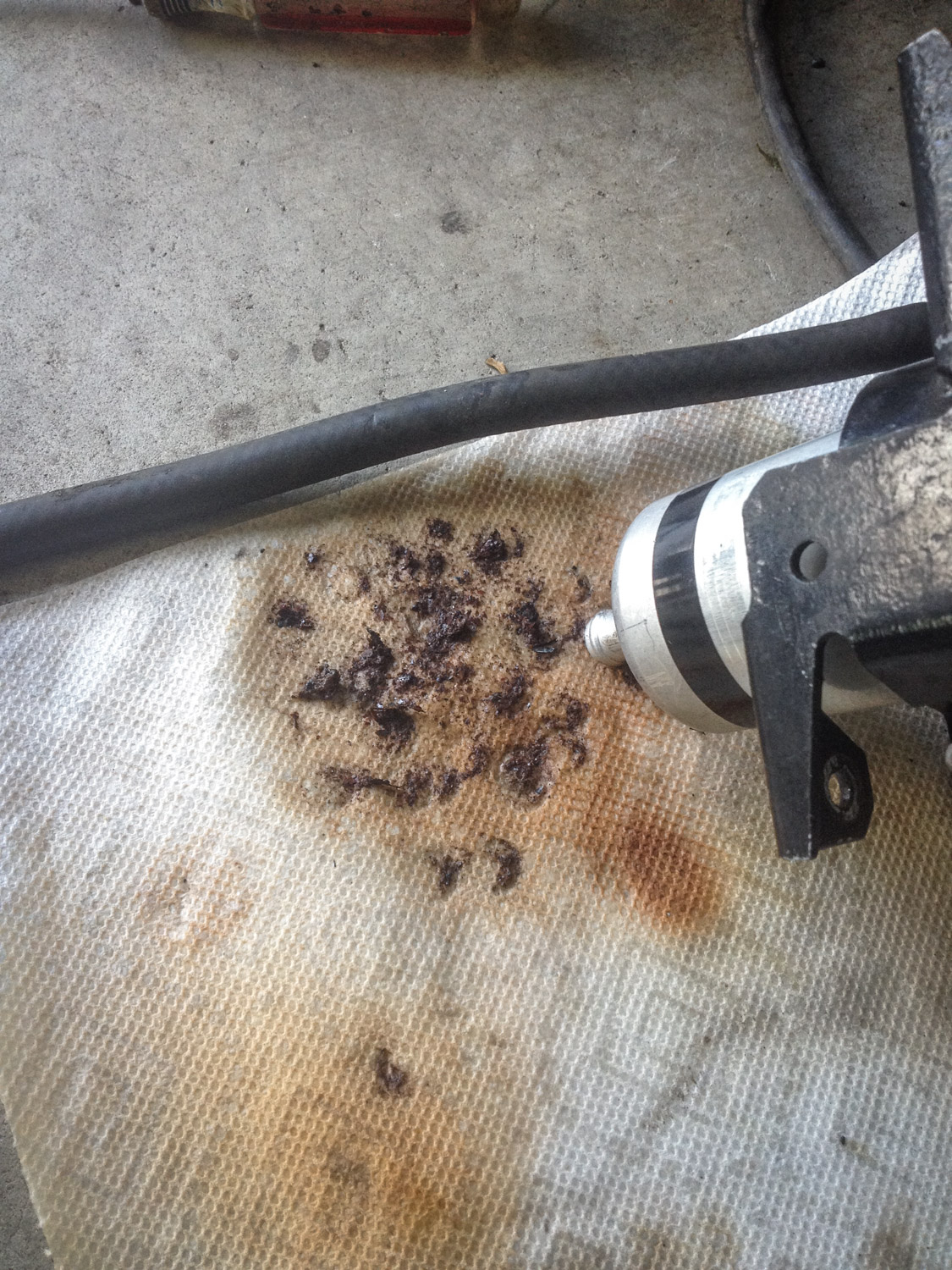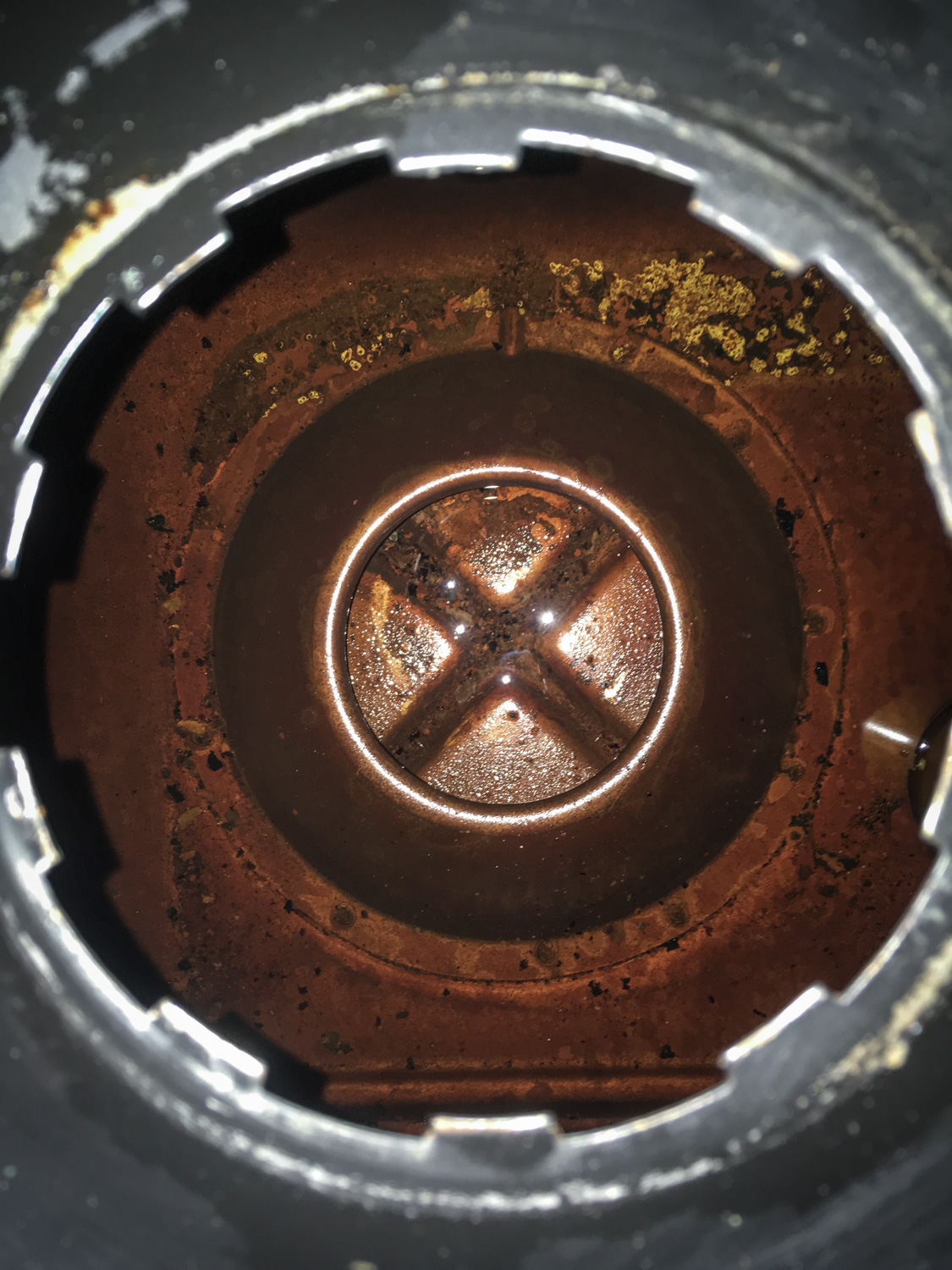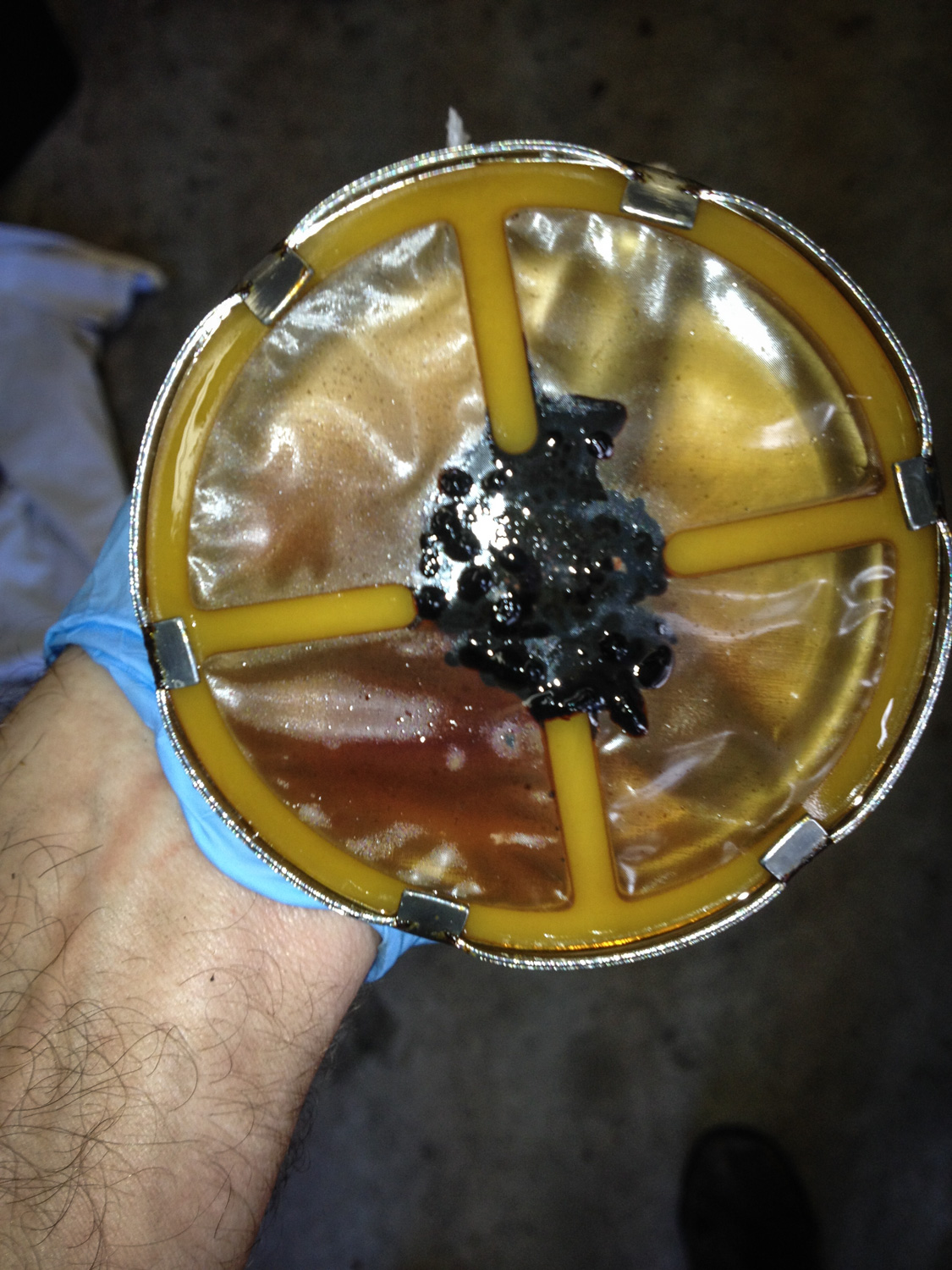Media | Articles
Why you shouldn’t cold-start a long-dead car
You can find a whole class of “cold start” or “dead start” videos on YouTube. Maybe you’ve seen them. Someone approaches a car that hasn’t run in decades. Often, it’s sitting out in a corner of a field. The guy has a can of starting fluid, a gas can, and a battery jumper pack. He hooks up the jumper pack to the battery, dumps gas in the tank, sprays starting fluid into the intake, and cranks away. The car roars to life. Whooping and hollering ensues. Sometimes he even gets in it and drives off.
As Woody Allen said in Annie Hall, “Boy, if life were only like this.”
Such “dead starting” may be dramatic, but if you care about the car, it isn’t a good idea. Properly starting a car after it’s been sitting for years or decades requires:
- Making sure that the engine is free to rotate
- Clean oil
- Lubricating the cylinder walls
- Clean air
- Clean fuel
- Clean coolant
- Intact fan belt
Think of this this way: Any medical student learns that one of the most important parts of the Hippocratic oath is “Primum non nocere,” or “First, do no harm.” It’s like that. A car that’s been sitting for years may have been experiencing a long slow decline, but at least it’s in stable predictable condition. When you try to start it, your first responsibility is simply not to break it.
Making sure that the engine is free to rotate
Before you take a long-dormant engine and subject it to the twisting forces generated by suddenly sending hundreds of amps of current through the starter motor, it’s a good idea to verify that the engine can, in fact, turn, and that the pistons aren’t seized in the cylinders or the engine isn’t bound up for some other reason, such as a dropped valve.
Marketplace
Buy and sell classics with confidence
The most direct way to do that is to put the transmission in neutral, put a ratchet handle and socket directly on the crankshaft nut, and try to rotate the engine, but the newer the car, the harder the crank nut can be to reach. If the engine is small, you can try removing the spark plugs, leaning the heel of your hand on the fan belt to tighten it, and either grabbing a fan blade (if there’s no fan clutch) or putting a wrench on the alternator pulley. Alternatively, you can put the car in gear and rock it. But one way or another, you should verify that the engine turns.
Clean oil
This one really should be a no-brainer. Oil isn’t wine. It doesn’t improve with age. We’ve all seen the videos of what looks like soft-serve chocolate ice cream plopping out of an oil drain port. Don’t risk sending it through the engine. Unless the dipstick reveals clear amber-colored sweet-smelling oil that looks like it was changed yesterday, spend the 30 bucks, buy oil of the correct weight and a new oil filter, and take 20 minutes and change the oil.

Lubricating the cylinder walls
If you care about the car, and it’s been sitting for years, it’s strongly advised that, once you verify that the engine rotates, you lubricate the rings and cylinder walls by removing the spark plugs, squirting oil through the plug holes with a Wizard of Oz-style oil can, and gently rotating the engine a few times. If there’s corrosion on the cylinder walls or carbon causing the rings to stick in the piston grooves, this will get oil onto it and give it the chance to soak in. Note that when I resurrect a long-dead car, I combine oiling with adjusting the valves, as that also requires rotating the engine. While the valve cover is off, I pour fresh oil over the valvetrain, but that’s extra credit.

Clean air
Any car that’s been sitting in anything less than a museum-clean environment is at risk of rodent intrusion into the air cleaner housing. This can manifest itself as dung, seeds, nests, dead rodent bodies, or all four. When you start the car, some or all of that can get sucked into the engine, particularly if rodents have chewed the filter and used it for nesting material. At an absolute bare minimum, before you crank over a long-dead car, pull off the air cleaner housing and clean out any detritus. If the filter is dusty or mildewed, you’d be wise to replace it, but banging it out to shake off dust is better than nothing.

Clean fuel
Even under the best of circumstances, having a car sit is hard on fuel. The shelf-life of E10 (gas with 10 percent ethanol) is widely quoted as being 30 days. When it sits for months, it can attract water, which sinks to the bottom of the tank. Most vintage cars have metal gas tanks, so water can cause the tank to corrode. On most cars, the fuel filter is after the fuel pump, so if the tank is full of rust or other particulate matter, dumping in fresh gas and starting it can cause the pump to pull the rust out of the tank and push it forward to the engine. Worse, on a fuel-injected car with a high-pressure fuel pump, the pump can act like a little food processor, grinding up the rust.

If the tank has evaporated itself dry, there’s often a layer of gummy residue left that smells like shellac. It’s important that this get cleaned out before new gas softens it (dissolves it) and allows it to gum up the fuel injectors or the jets in the carburetor. You can usually get a sense of the degree of varnish contamination by simply undoing the gas cap and taking a whiff. If it smells like shellac, you’re going to need to have the tank cleaned.
But really, there’s no substitute for visual inspection. If the tank has a bolt-in pick-up tube or level sensor, remove it and shine a flashlight in. You may see rust, varnish, or both. If it’s minor, you may be able to spray some carb cleaner and get the varnish off with rags. If there’s rust, you can do a decent quick-and-dirty job of cleaning it by taking the tank out, throwing a chain inside, shaking the tank around to loosen up the surface scale, then rinsing it out. For a more permanent solution, take it to a tank shop, or investigate rust-and-sealing products such as Red Kote.

Really, the best thing to do is a systematic stem-to-stern fuel system cleanout. Inspect the gas tank and pick-up tube and clean them as necessary. Then move on to the fuel pump, tapping the inlet tube out onto a paper towel to see if it has ingested rust. Disconnect every gas line, blow out with compressed air, replace every filter, and inspect and clean every screen. If you don’t do this, one twist of the key can blow your chance of having a clean fuel system. But at a minimum, don’t pour gas into a tank you’ve verified is rusty or smells like shellac, and change the fuel filter.

If, for practical reasons, you can’t do a systematic fuel cleanout where a long-dead car is currently sitting, it’s safer for the car to start it using clean fuel delivered from a gas can. The problem with this, though, is two-fold. First, it’s a fire hazard. The hose can pull out, or the can may tip. So if you use a gas can, be absolutely certain to have a fire extinguisher at the ready. Second, using a gas can is easy on vintage carbureted cars, but most fuel-injected cars have a high-pressure fuel pump mounted near the tank, and they use a fuel return line, both of which make using a gas can a bit more challenging.
Note that, in addition to the fuel contamination issue, there’s the flammability issue. Fuel leaks aren’t like oil or antifreeze leaks. They can kill you. Check for pillowy-soft or cracked fuel lines, have a fire extinguisher handy, and if the car starts, shut it off at the first sight or smell of leaking fuel.
Clean coolant
Clean coolant isn’t as important as clean air, fuel, and oil. But prior to starting a dead water-cooled car, you certainly want to open up the cap on the radiator or the fill tank and verify that you see coolant. If you can’t, fill it. This may, in fact, reveal why it was empty; you may suddenly see coolant streaming out through a major leak, in which case the leak needs to be addressed. If the tank is full but the coolant is brown instead of neon antifreeze green, blue, or orange, then the coolant is ancient and badly rust-contaminated, and you’d be advised to drain and flush the cooling system before starting the car. If the coolant is oily and frothy, then it’s contaminated with oil due to a bad head gasket or other more serious engine malady, and you may want to reconsider starting the engine at all until you’ve done additional diagnostics such as a leak-down test and a compression test.

Sitting for years is almost as hard on the cooling system as it is on the fuel system. Hoses get super soft or rock hard, and metal part—such as reservoir tanks, coolant necks, and vanes on water pumps—corrode. Once the car has been started, watch the temperature and pay careful attention to coolant leaks, as a sticky thermostat or coolant loss can overheat the car in short order. Prior to driving a decade-dead car any farther than onto a ramp truck, a full cooling system inspection and overhaul is strongly advised, as odds are high that it will begin leaking through weak hoses on corroded necks.
Lastly, be aware that, as years turn into decades, coolant in an unsealed system can evaporate and crystalize, and if you start the car, you run the risk of plugging up coolant passages in the engine.

Intact fan belt
This is the easiest of them all. On an air-cooled car (VW, Porsche, Corvair), there’s a belt that spins the fan and the alternator. On a water-cooled car, there may be separate belts for the water pump, alternator, and power steering, or there may be one serpentine belt for all of them. Whichever you own, be certain that the belt driving the water pump or the cooling fan on an air-cooled car are present and functional, otherwise the engine will overheat in short and expensive order.
You might ask “Do you do all these things every time you start a dead car?” or “What’s the years-dead threshold where this list kicks in?” Fair questions. If I buy a car that’s been dead for a decade, yes, I do every one of these things, every time. If I’m looking at a car that’s been dead for a decade, I try to do as many things on the list as I can to ascertain the condition of the engine without performing what’s essentially unpaid maintenance on a car I haven’t yet bought. If a car has been sitting for a few years, looks in basically good condition, and the gas tank doesn’t smell like shellac, I may only check the air cleaner and the antifreeze before trying to start it. Between two years and 10, there’s a huge gray area.
It’s often said that an engine needs three things—fuel, spark, and compression—to start. It’ll still need those things to start, and many more things to run smoothly, reliably, and safely. But it, to make a bad pun, it starts with the list above. It may not be sexy or dramatic, and it’s certainly not quick, but if you want to avoid doing any harm, it’s what you should expect to do.
***
Rob Siegel has been writing the column The Hack Mechanic™ for BMW CCA Roundel magazine for 30 years. His most recent book, Just Needs a Recharge: The Hack Mechanic™ Guide to Vintage Air Conditioning, is available on Amazon (as are his previous books). You can also order personally inscribed copies here.










Terrific article, Rob. Thank you for your straightforward educational approach for those of us who would love to be ace mechanics but aren’t close. Have a basic ’75 Corvette Coupe I bought new at the St. Louis plant outlet in ’74. Daily driver until I parked it in my garage in 1982……..( I know, I know….). Kids and insurance kept it there, embarrassed to say. Not proud of my neglect…..Your article is motivating me, finally, to get off my butt and get moving. Have always loved cars, driving anything……….40 years, no excuse…..
Did you run into any issues I’m about to try to start my 1973 Corvette it’s been in the garage for years I only replaced the gas tank. How was your collant system?
What’s the best fuel and coolant cleaner.
Getting better I think
Thanks Rob. Great article.
Oddly enough, I was sent to this via my new 1969 Corvette activities. Felt it was time for a change after 3 decades of BMW 2002 (tii) enthusiasm… Wanna buy a sweet ’72 tii??
Keep ém comin’!
Steve
This is great!! Best article I’ve seen on the subject. I moved provinces in Canada, have a 2002 BMW 300CI that’s been in my driveway for 6 years. I’m hoping to get it back to drive-able this winter in my garage. I will follow your advice. What do you think about starters? I’ve read they can go from sitting.
Great article and tips! I have a 1973 Pontiac Grand Am that I bought new but haven’t driven or started it in 22 years and it’s been garage kept. I’ve rebuilt the carb, plug’s out, lubed the cylinders with Marvel Mystery Oil and rotated the engine both by hand and with the starter. I replaced all the vacuum lines and will replace the spark plugs, air filter prior to starting. Once it starts I have new wires, distributor cap, rotor, points, condenser, fan belts, hoses and thermostat to replace.
The fuel smells bad and the tank has a little hole under the strap and will need to be replaced, so I was planning on filling the Quadrajet 4bbl with 2 ozs of fuel thru its vent tube and use the accelerator pump to feed the engine for the first start up. My question is it better to drain the radiator and refill it, I won’t be able to flush it or just fill it for the initial start up? Also my garage is not heated it’s 30 degrees Fahrenheit, is that too cold for a startup? I have a propane heater that I can heat the garage to maybe 50 degrees.
Great article. I recently found a 53 Chevy 3100 that has been sitting in a garage for 16 years in Texas.
Since I am in NY I will be traveling there to get it ready to ship. Of course having it running will be a plus.
Now I know have an idea of what I need to bring from NY so it’s less trips to the auto parts store there.
I guess there will be little room left in my luggage for clothes.
Wish me luck
How do I find someone who can be trusted to work on a car like this at my home in Texas?
My Jowett Javelin has been off the road since 1969 and so I have taken all the engine covers off so that I can individually lube the rockers, valve stems, cylinder walls, crank journals, tappets etc before spinning the engine over with new oil (and plugs out) until I’m confident oil is getting through especially the smaller galleries to, for example, the rocker shaft, camshaft and timing chain. When I first inspected the car the ‘amber nectar’ coating the dipstick could have given me false confidence; with the sump off it was clear that all the carbon crud and lead additives in the oil had, over 55 years, completely settled out at the bottom of the sump!
A friend is giving my 18 yr old son their 2008 Toyota Camry that has been parked in their garage but hasn’t been started or driven for 12-18 months. They said the battery is dead, but everything else was functioning fine the last time they drove it, all 4 tires have the right amount of air in them, etc. How much on this list is crucial to do before starting that kind of car up vs. the older cars many of the other commenters are talking about? B/c I would probably need to have it towed to a mechanic to check the fuel, rotate the engine, lubricate the cylinder walls, etc.
would this help me with a 2000 Buick Century that has been sitting for 4-6 years to get running?
100% yes!